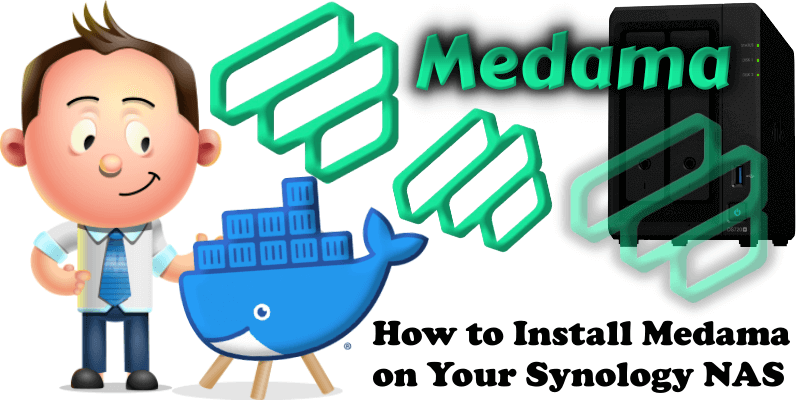
Medama Analytics is an open-source project dedicated to providing self-hostable, cookie-free website analytics. With a lightweight tracker of less than 1KB, it aims to offer useful analytics while prioritizing user privacy. In my opinion, Medama is faster and more lightweight compared to Umami, Plausible and Matomo. In this step by step guide I will show you how to install Medama on your Synology NAS using Docker and Portainer.
This guide works perfectly with the latest Medama v0.6.1 release.
STEP 1
Please Support My work by Making a Donation.
STEP 2
Install Portainer using my step by step guide. If you already have Portainer installed on your Synology NAS, skip this STEP. Attention: Make sure you have installed the latest Portainer version.
STEP 3
Make sure you have a synology.me Wildcard Certificate. Follow my guide to get a Wildcard Certificate. If you already have a synology.me Wildcard certificate, skip this STEP.
STEP 4
Go to Control Panel / Login Portal / Advanced Tab / click Reverse Proxy. Follow the instructions in the image below.
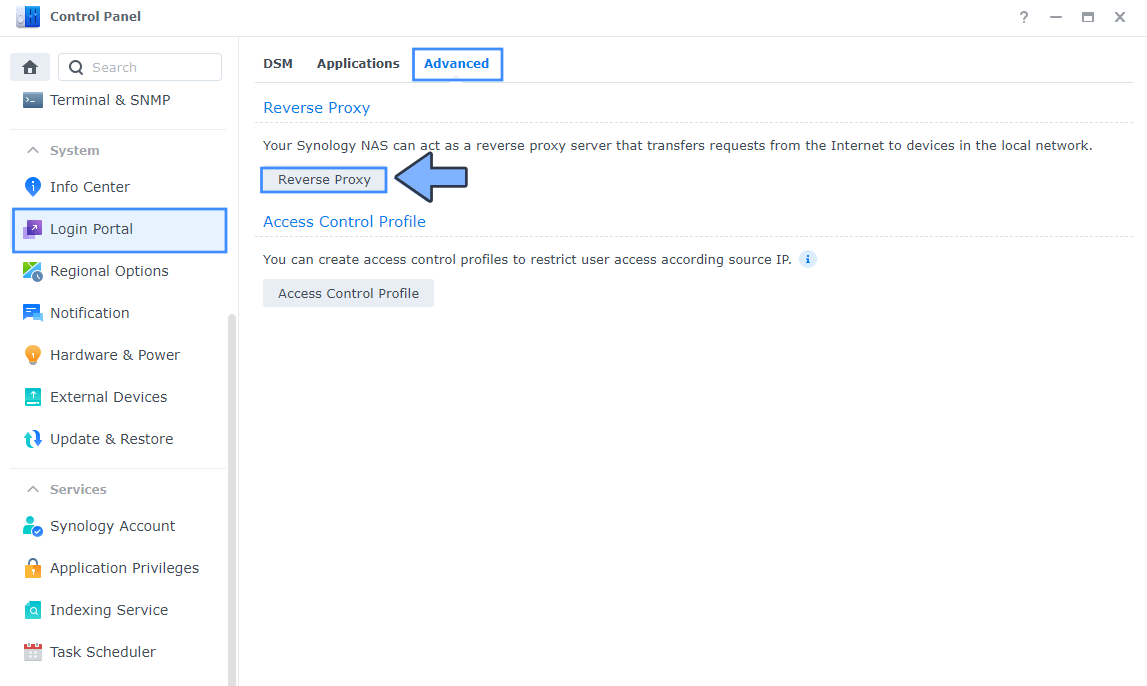
STEP 5
Now click the “Create” button. Follow the instructions in the image below.
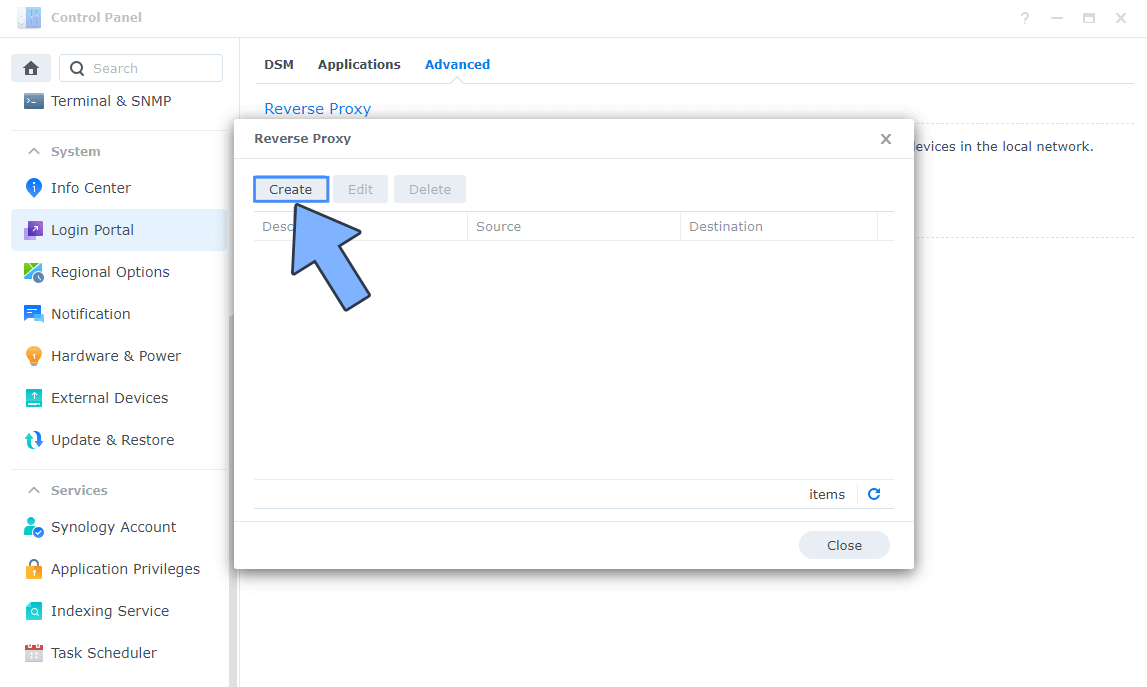
STEP 6
After you click the Create button, the window below will open. Follow the instructions in the image below.
On the General area, set the Reverse Proxy Name description: type in Medama. After that, add the following instructions:
Source:
Protocol: HTTPS
Hostname: medama.yourname.synology.me
Port: 443
Check Enable HSTS
Destination:
Protocol: HTTP
Hostname: localhost
Port: 6900
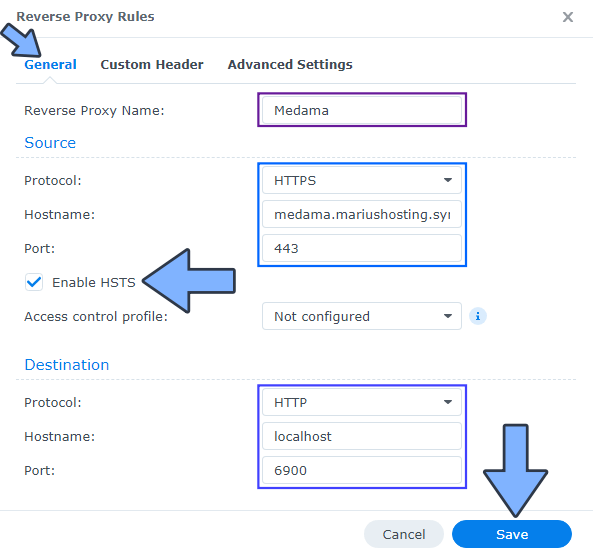
STEP 7
On the Reverse Proxy Rules, click the Custom Header tab. Click Create and then, from the drop-down menu, click WebSocket. After you click on WebSocket, two Header Names and two Values will be automatically added. Click Save. Follow the instructions in the image below.

STEP 8
Go to Control Panel / Network / Connectivity tab/ Check Enable HTTP/2 then click Apply. Follow the instructions in the image below.
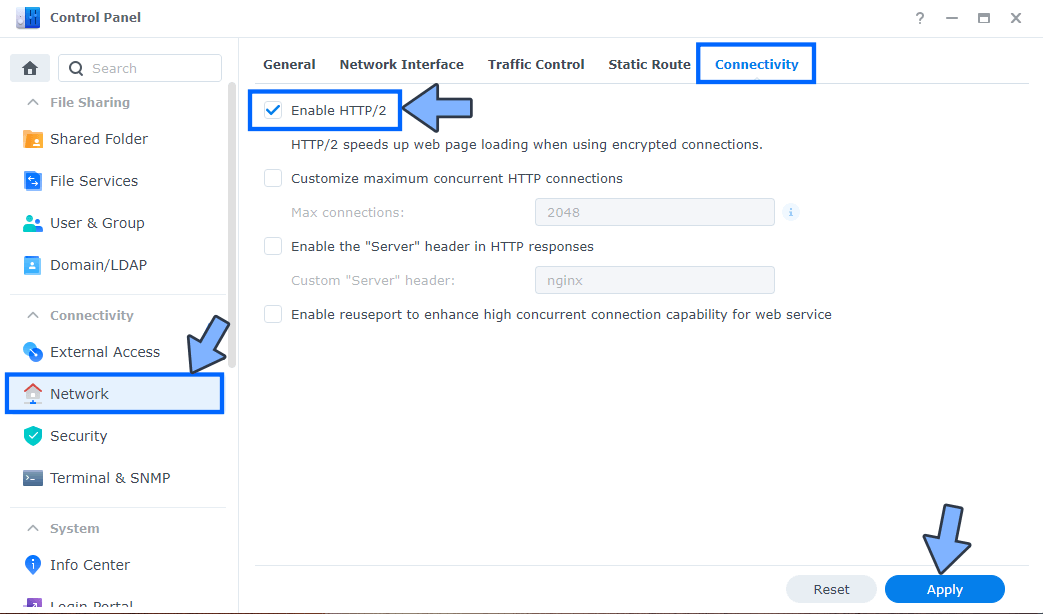
STEP 9
Go to Control Panel / Security / Advanced tab/ Check Enable HTTP Compression then click Apply. Follow the instructions in the image below.
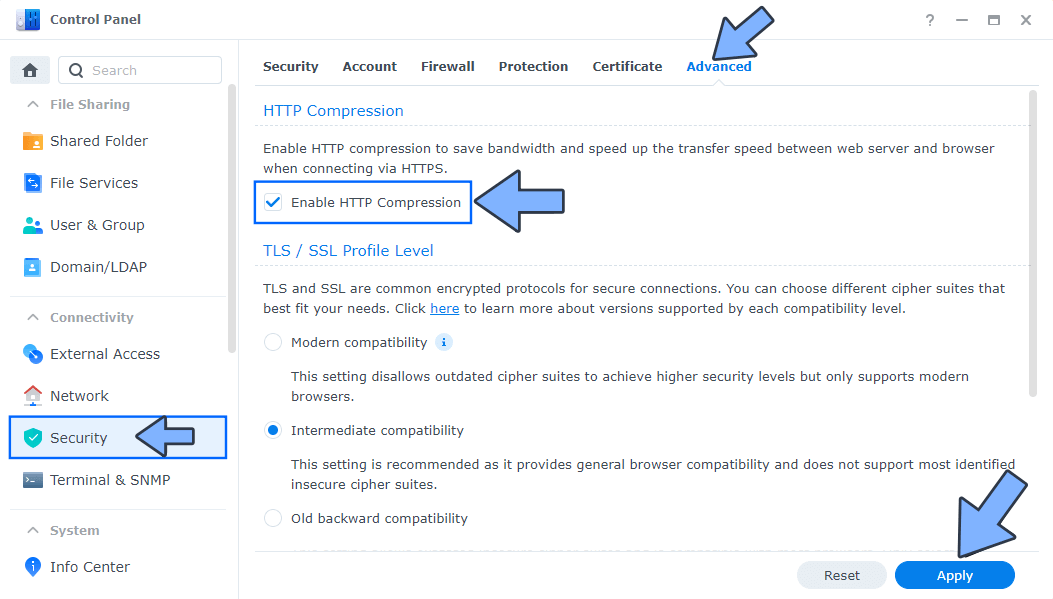
STEP 10
Go to File Station and open the docker folder. Inside the docker folder, create one new folder and name it medama. Follow the instructions in the image below.
Note: Be careful to enter only lowercase, not uppercase letters.
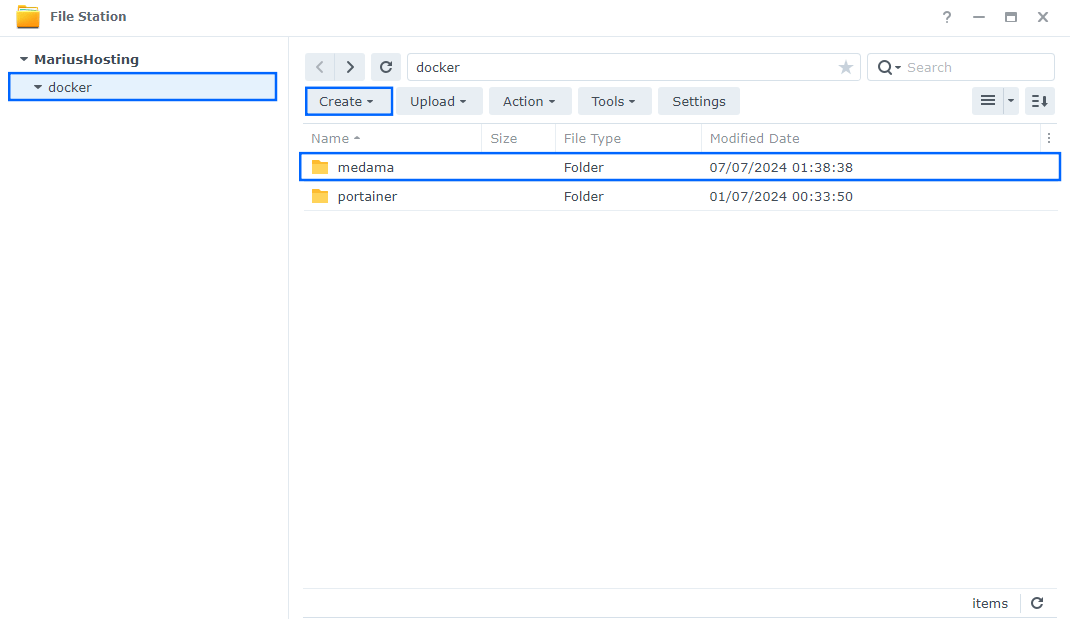
STEP 11
Log into Portainer using your username and password. On the left sidebar in Portainer, click on Home then Live connect. Follow the instructions in the image below.
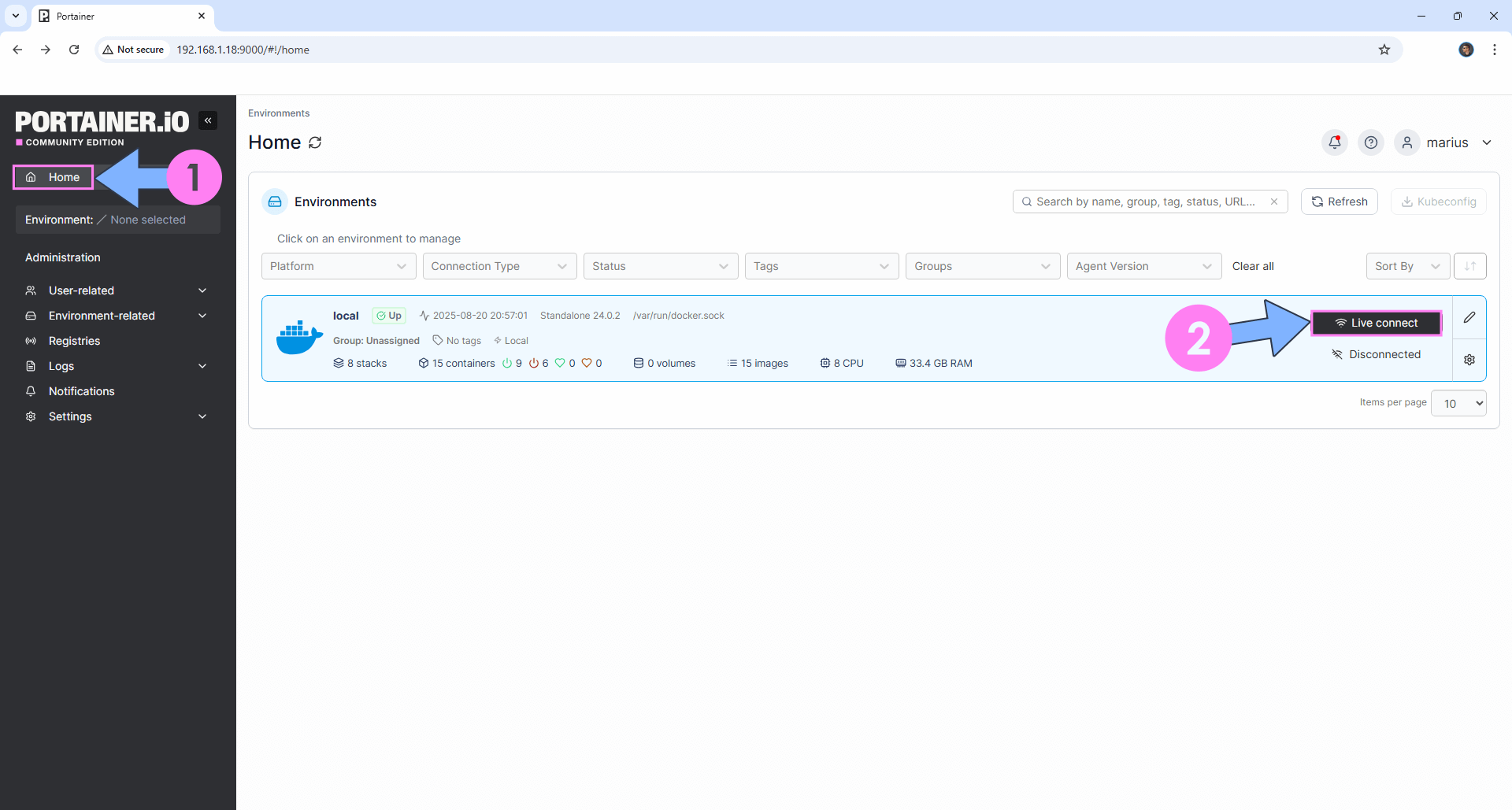
On the left sidebar in Portainer, click on Stacks then + Add stack. Follow the instructions in the image below.
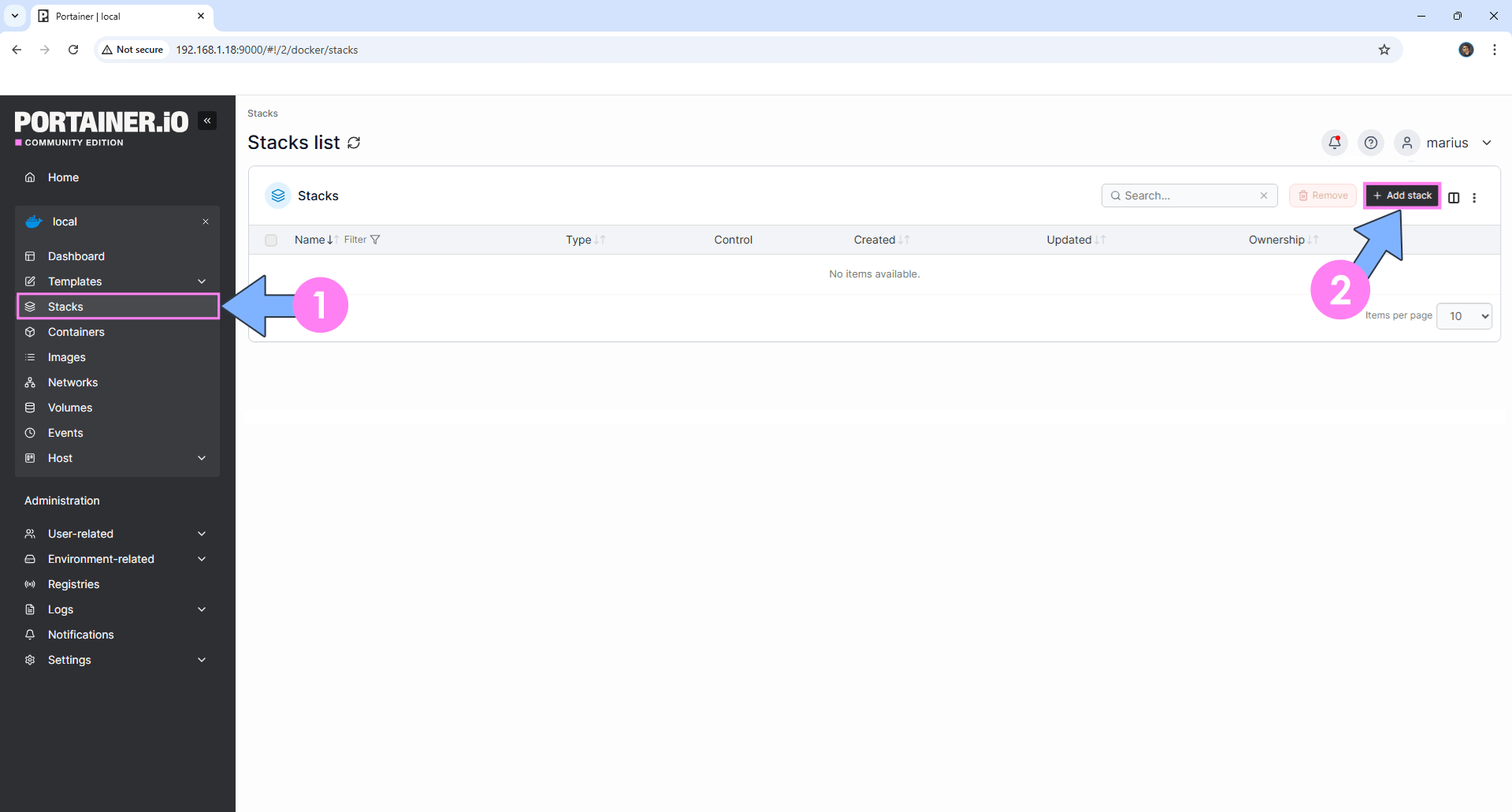
STEP 12
In the Name field type in medama. Follow the instructions in the image below.
version: "3.9"
services:
medama:
container_name: Medama
image: ghcr.io/medama-io/medama:latest
volumes:
- /volume1/docker/medama:/app/data:rw
ports:
- 6900:8080
restart: on-failure:5
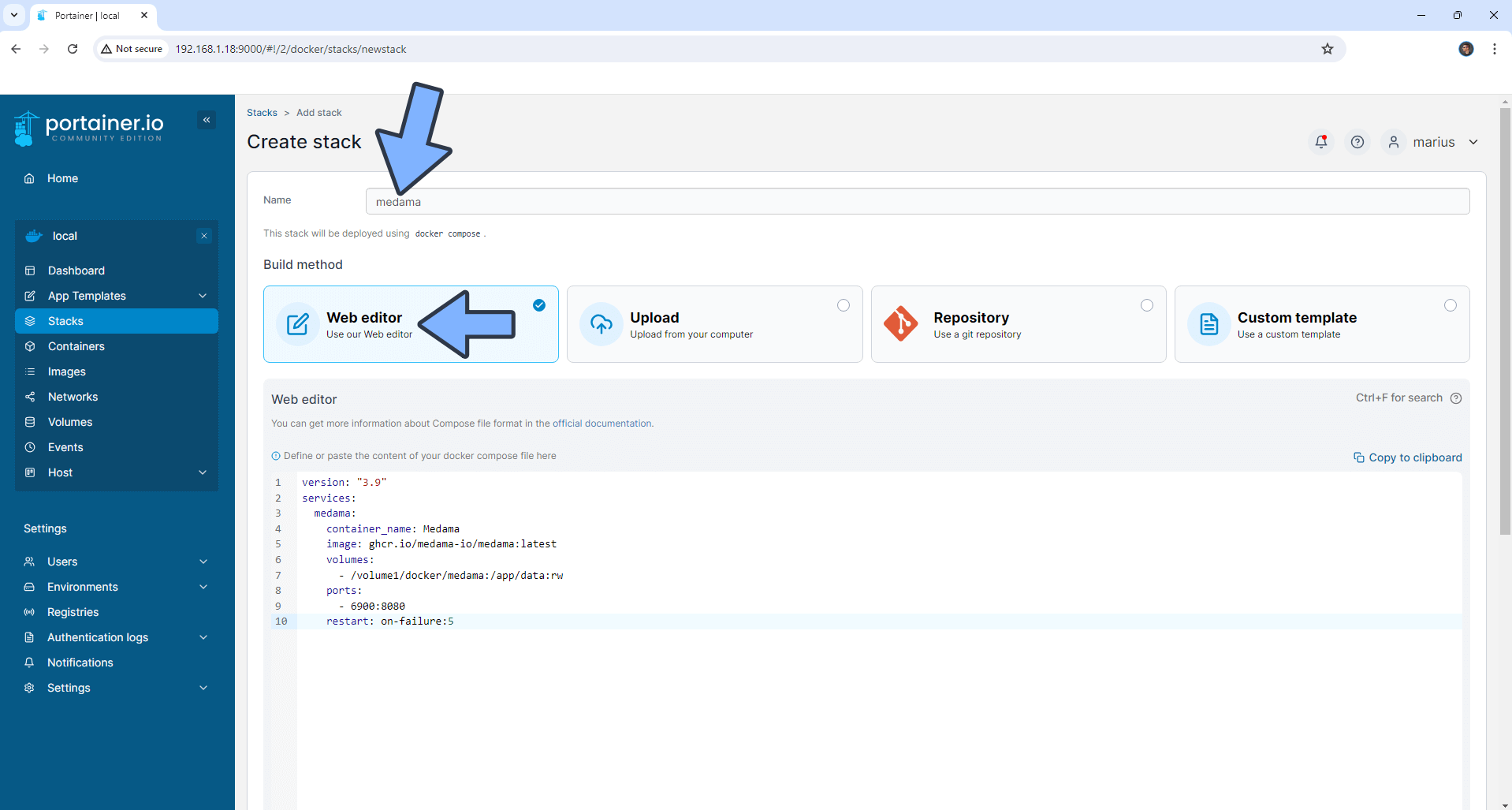
STEP 13
Scroll down on the page until you see a button named Deploy the stack. Click on it. Follow the instructions in the image below. The installation process can take up to a few minutes. It will depend on your Internet speed connection.
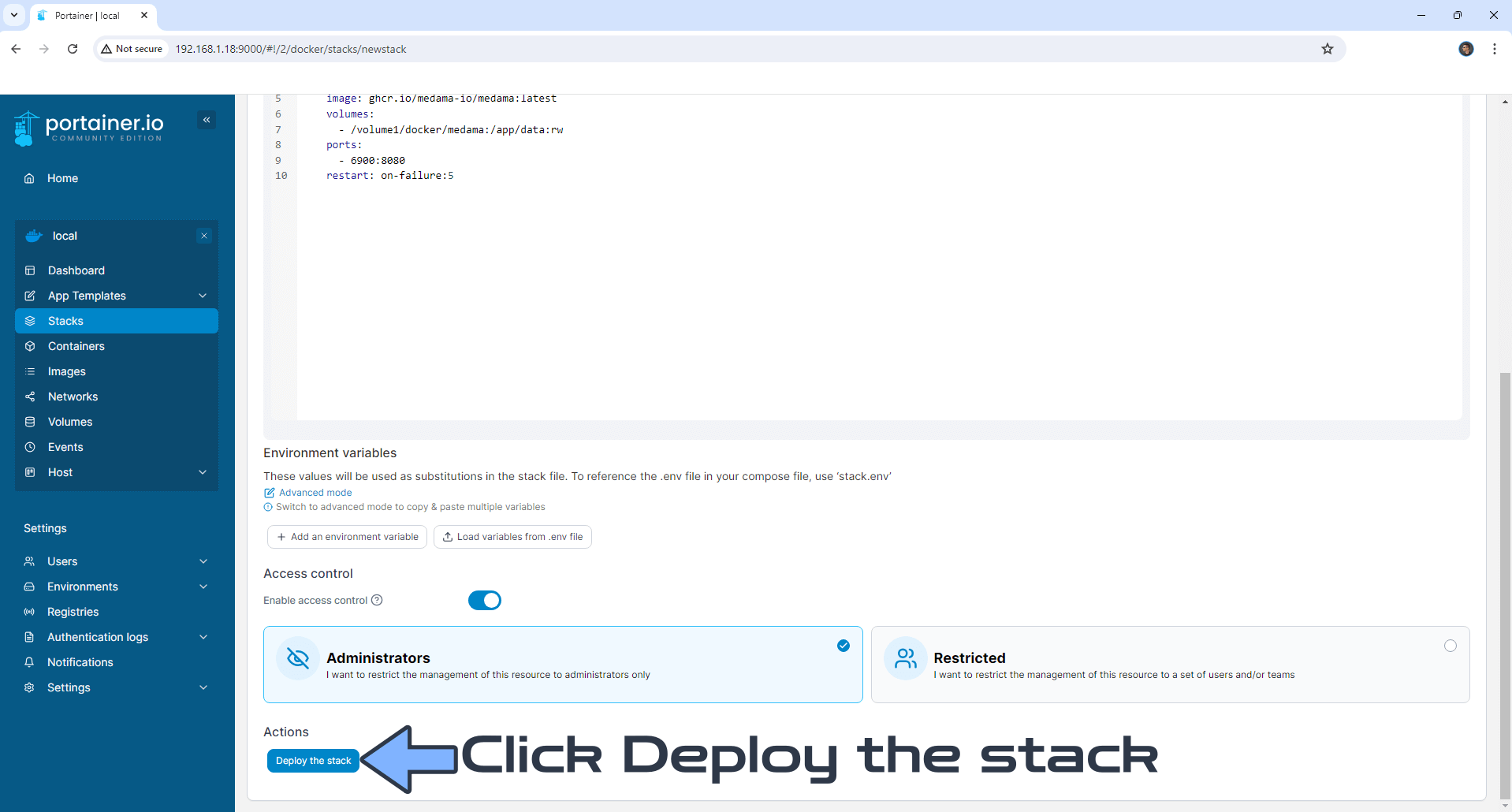
STEP 14
If everything goes right, you will see the following message at the top right of your screen: “Success Stack successfully deployed“.
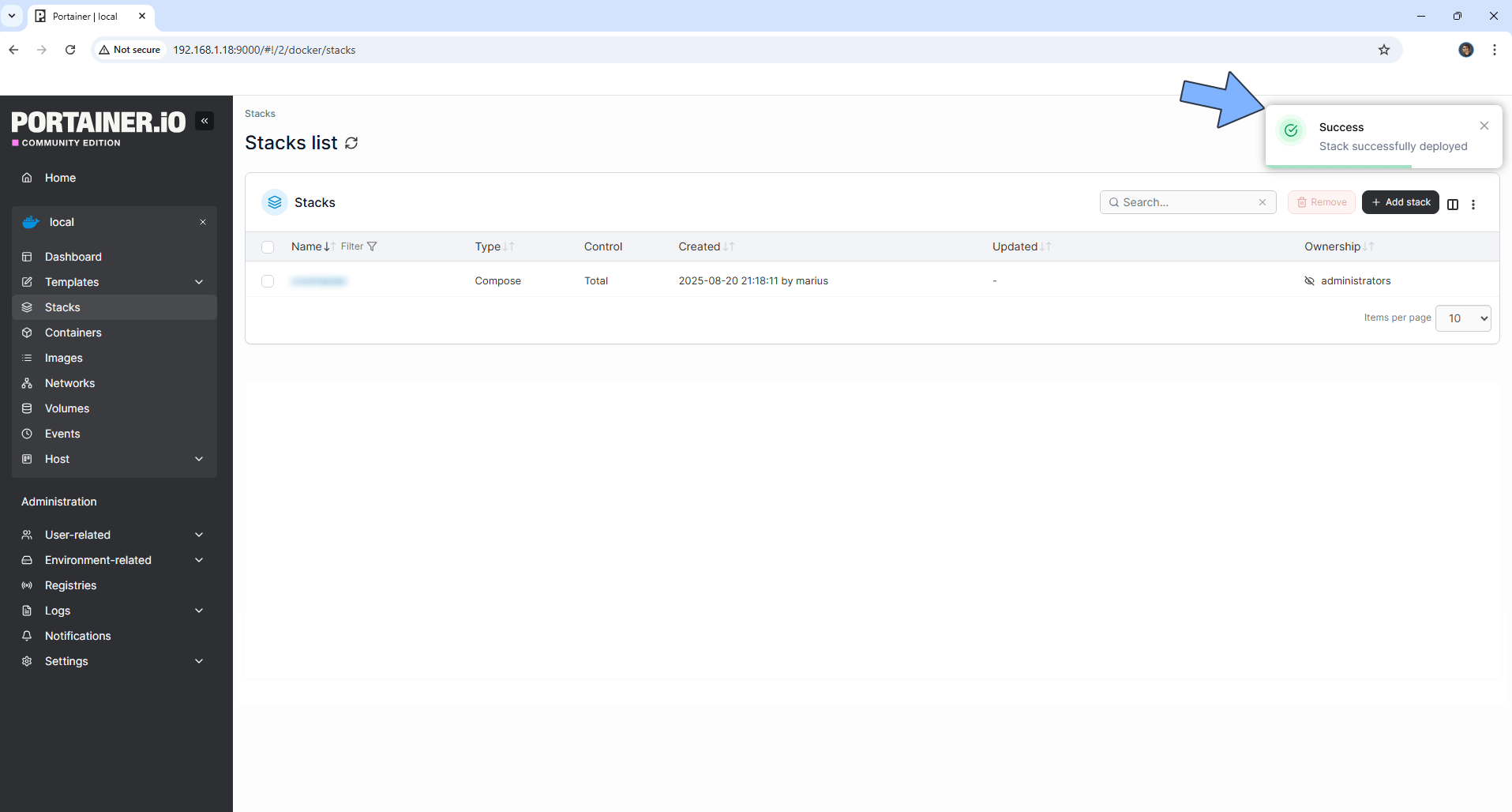
STEP 15
🟢Please Support My work by Making a Donation. Almost 99,9% of the people that install something using my guides forget to support my work, or just ignore STEP 1. I’ve been very honest about this aspect of my work since the beginning: I don’t run any ADS, I don’t require subscriptions, paid or otherwise, I don’t collect IPs, emails, and I don’t have any referral links from Amazon or other merchants. I also don’t have any POP-UPs or COOKIES. I have repeatedly been told over the years how much I have contributed to the community. It’s something I love doing and have been honest about my passion since the beginning. But I also Need The Community to Support me Back to be able to continue doing this work.
STEP 16
Now open your browser and type in your HTTPS/SSL certificate like this https://medama.yourname.synology.me that you have previously created at STEP 6. In my case it’s https://medama.mariushosting.synology.me If everything goes right, you will see the Medama login page. Follow the instructions in the image below.
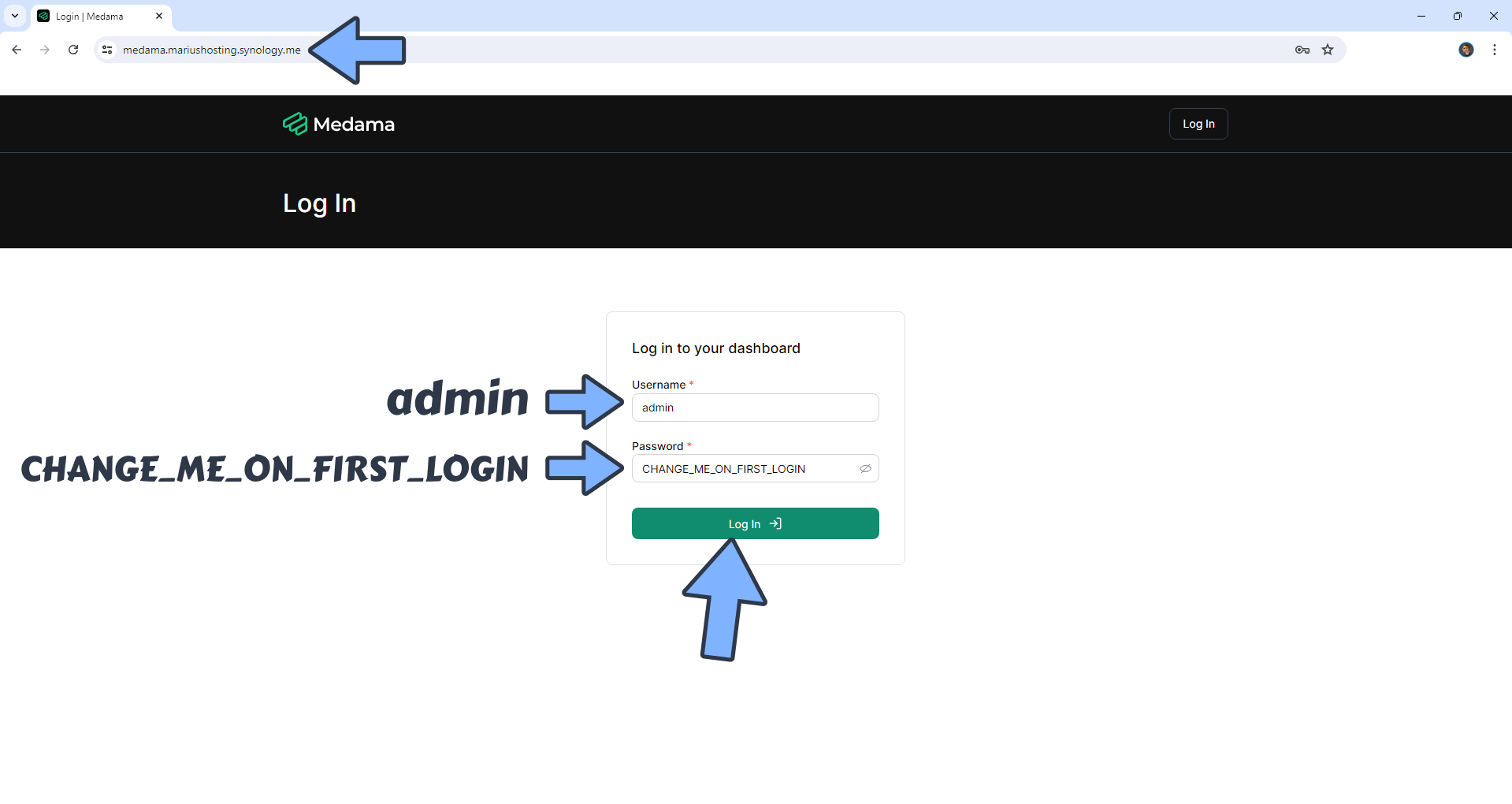
STEP 17
At the top of the page, click the Settings tab. Change the default username and password with your own credentials, then click Save. Follow the instructions in the image below.
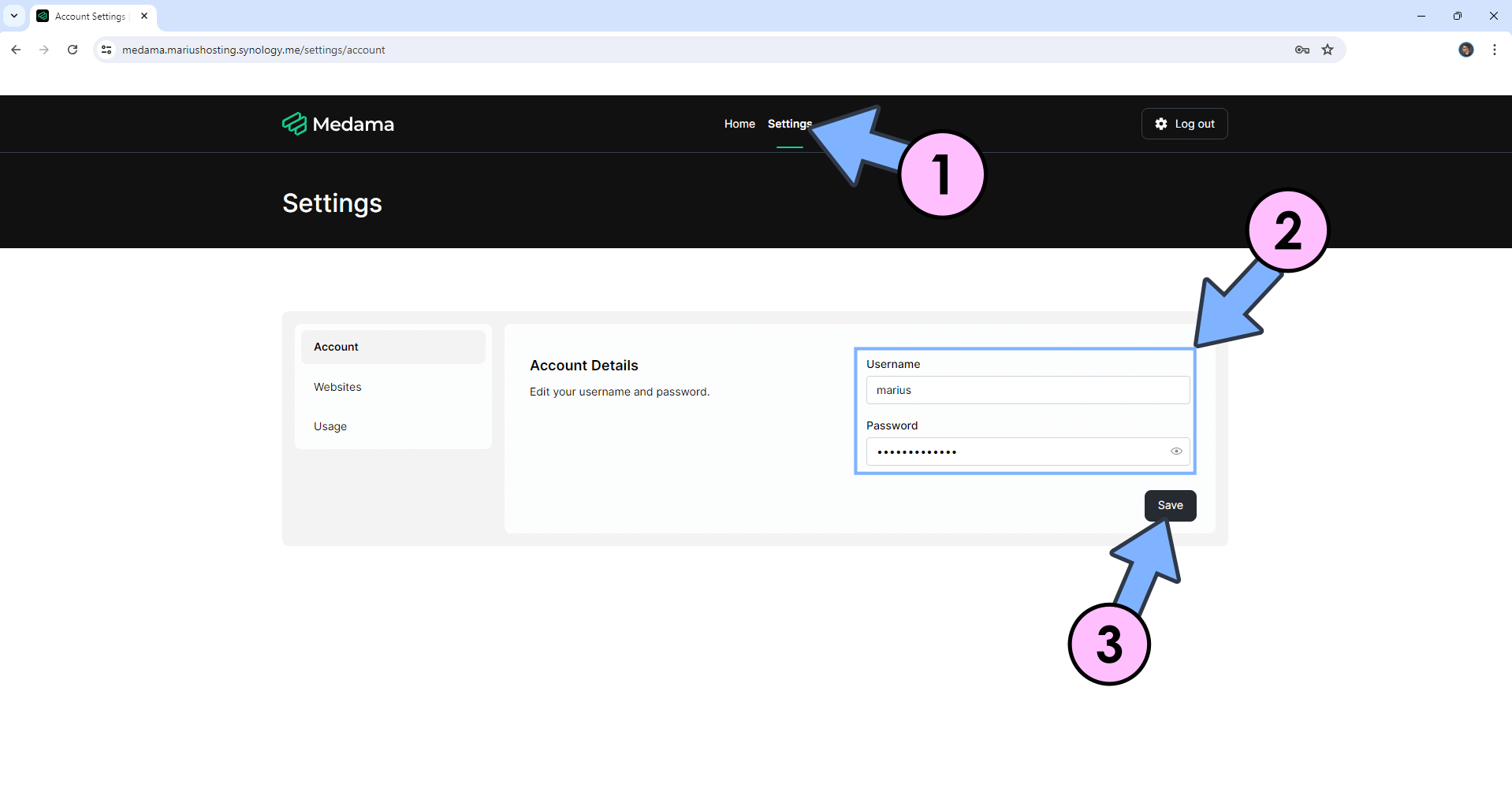
STEP 18
Click the Home tab at the top of the page, then +Add Website. Type in your own domain name that you want to monitor without https at the beginning. Click Add Website. Follow the instructions in the image below.
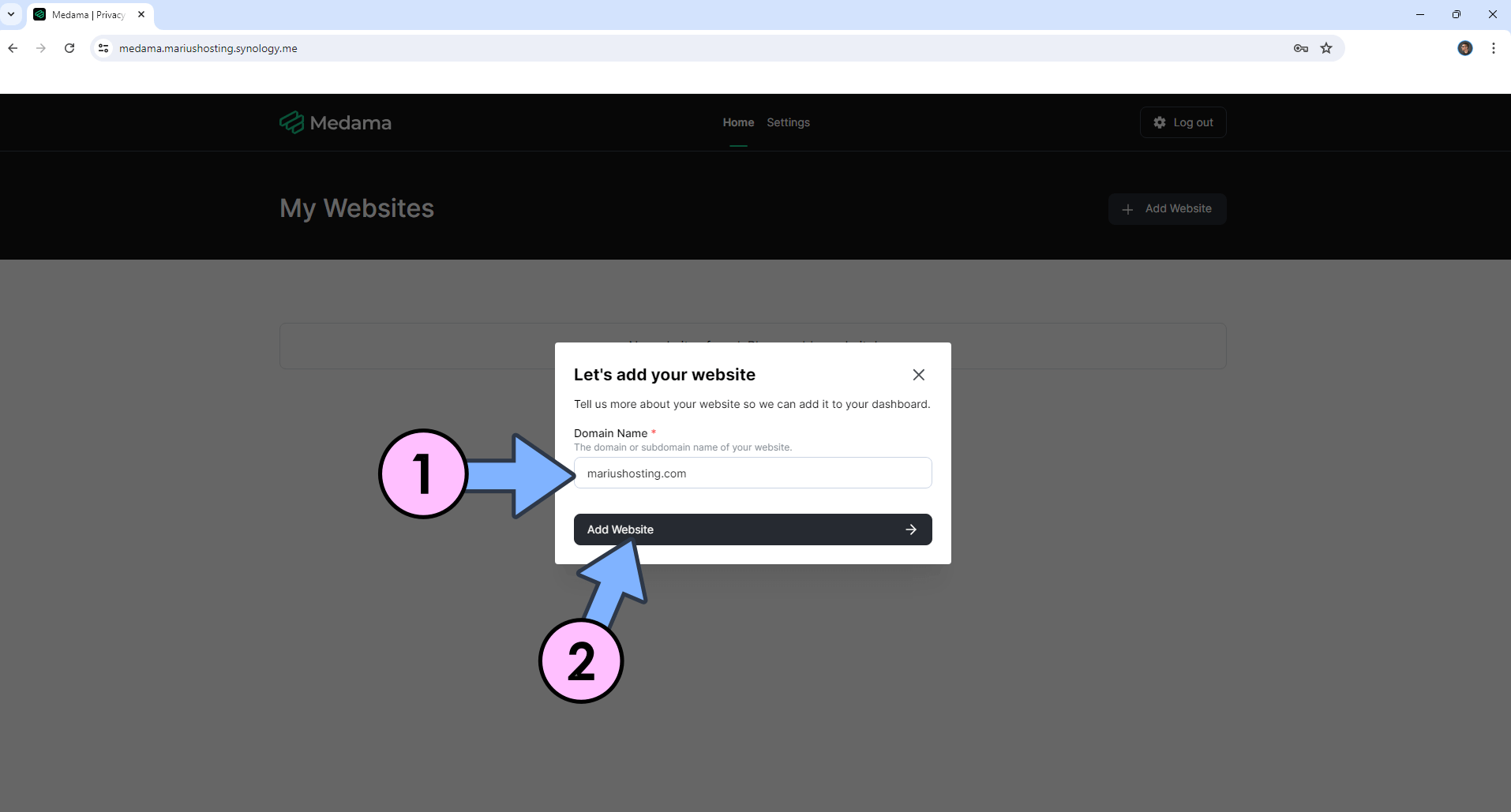
STEP 19
Paste your personal Medama Tracking code script on your website between the <head> and </head> tags of your site, then update your file. For example, I have a WordPress website hosted on a Synology NAS. If you have a WordPress website hosted elsewhere, know that the process is the same. Log into your WordPress admin Dashboard, click on the left sidebar on “Theme File Editor“, under Appearance. Select your theme then search for the header.php file. Paste your personal Medama Tracking code script in the header.php file between the <head> and </head> tags of your site, then update your file. Follow the instructions in the image below.
Note: You can add multiple websites via the Medama Dashboard later.
<script defer src="https://medama.mariushosting.synology.me/script.js"></script>
Note: Before you paste the script above, remember to change https://medama.mariushosting.synology.me with your own synology.me DDNS.

STEP 20
Go back to your Medama synology.me DDNS URL and start looking at the stats! After the Medama Tracking code script is added to your website, Medama will start to collect Real-Time analytics of your website. My blog doesn’t have any TRACKING CODE on it. I just installed Medama to show you how it works and how easily you can implement it on your website.
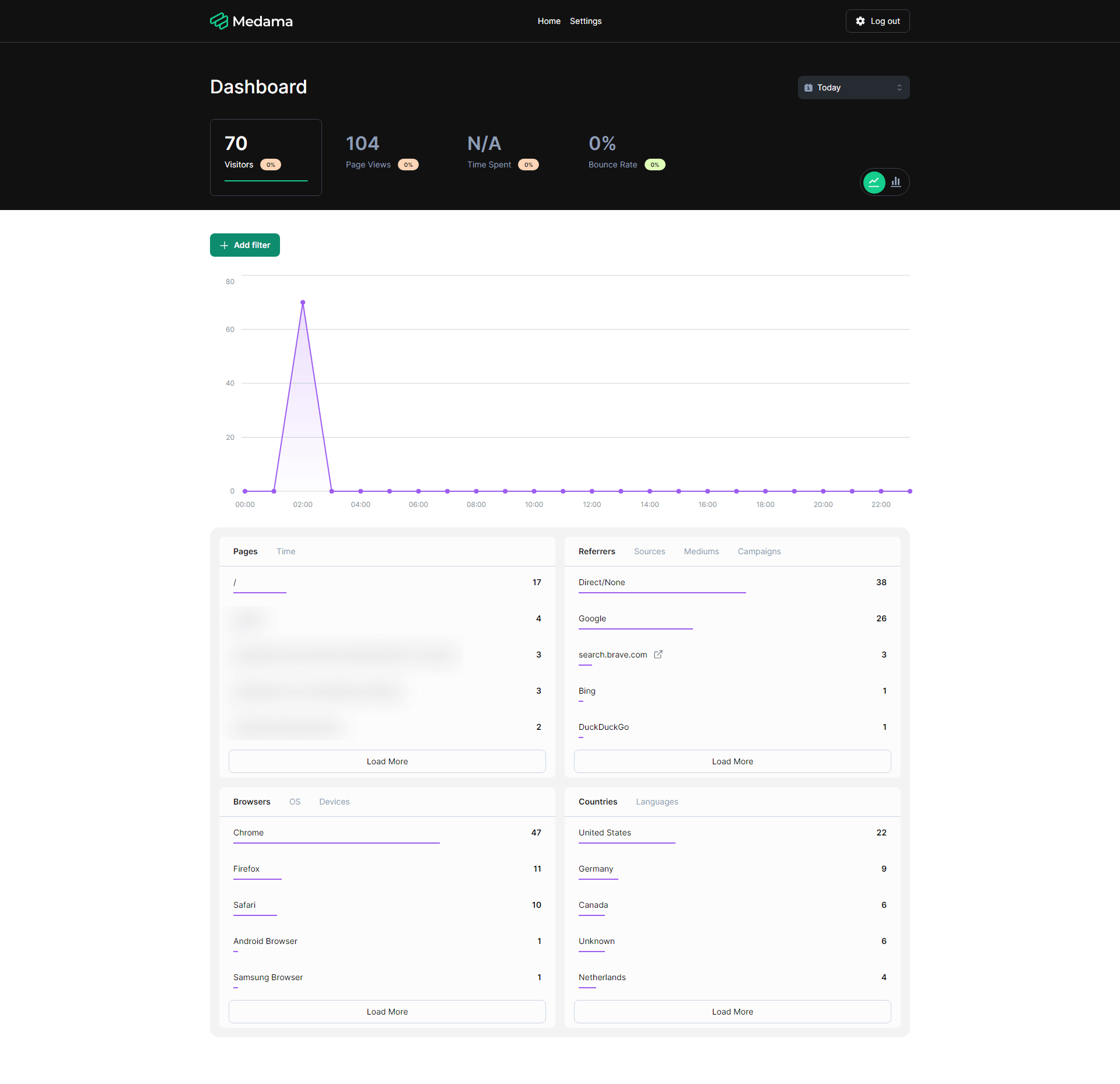
Enjoy Medama!
If you encounter issues by using this container, make sure to check out the Common Docker issues article.
Note: Can I run Docker on my Synology NAS? See the supported models.
Note: How to Back Up Docker Containers on your Synology NAS.
Note: Find out how to update the Medama container with the latest image.
Note: How to Free Disk Space on Your NAS if You Run Docker.
Note: How to Schedule Start & Stop For Docker Containers.
Note: How to Activate Email Notifications.
Note: How to Add Access Control Profile on Your NAS.
Note: How to Change Docker Containers Restart Policy.
Note: How to Use Docker Containers With VPN.
Note: Convert Docker Run Into Docker Compose.
Note: How to Clean Docker.
Note: How to Clean Docker Automatically.
Note: Best Practices When Using Docker and DDNS.
Note: Some Docker Containers Need WebSocket.
Note: Find out the Best NAS Models For Docker.
This post was updated on Saturday / August 30th, 2025 at 6:02 PM
